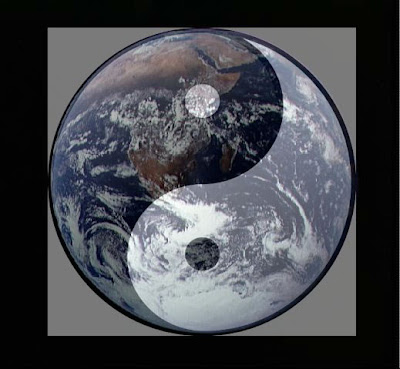In searching new methodologies for complex systems which could overcome the difficulties of the classical ones, at physical level 0 Hermann Haken has developed the Synergetics method (from greek "working together"), created in the 70s-80s years in the field of quantum laser theory, specifically to explain the coherence of the emitted radiation, namely how photons into the laser cavity interact all together in a spatio-temporal way to form the high coherence characteristic of the output laser radiation.
The laser radiation has two peculiar characteristics: the first is its monochromaticity, that is the light emission has a narrow wavelength (one-colored), the second is its coherence, as clear to anyone have seen a laser beam.
The laser radiation has two peculiar characteristics: the first is its monochromaticity, that is the light emission has a narrow wavelength (one-colored), the second is its coherence, as clear to anyone have seen a laser beam.
While the former is easily explained in terms of electron transitions between higher energy levels to lower, producing a photon energy very definite, the second can not be explained by the characteristics of the emission of photons in the laser cavity, which should emit independently of each other, and then incoherently.
This application example clarifies some key concepts used in Synergetics in a qualitative way. In the gas lasers the emitting atoms are locked in a tube with the ends of the semi-reflective mirrors that act as resonator for the emitted light. The mirrors are designed in order to reflect light in the axial direction often enough so that the corresponding wave remains for a long time within the device and can interact strongly with the atoms through the phenomenon of stimulated emission.
The atoms are excited from the outside, eg by a light pump source. After being excited, each atom can spontaneously emit a trace of light. In the usual case of a lamp, these tracks of light are emitted independently of each other incoherently, and the amplitudes are distributed as a Gaussian. When the pump intensity is increased beyond a critical value, called laser threshold, where it starts the population inversion - or when there are more electrons in higher energy levels than on the fundamental - the current state gives way to a single wave with amplitude stability on which the fluctuations of small amplitude and phase overlap. The pump intensity acts as control parameter. At its critical value, the old state becomes unstable. The emerging coherent wave acts as a order parameter that through stimulated emission forces the electrons of the gas molecules to emit light in a coherent way. This action by the order parameter over single parts of the system has been called by Haken enslavement principle. In this case it can be seen that from 1018 degrees of freedom, in which any of the 1018 atoms in the cavity emit independently of each other, and therefore the total sum is incoherent, one switch to a single degree of freedom, the coherent laser mode over thresholdl. If the pump power is still increased may appear further instabilities and a variety of temporal patterns, but even spatio-temporal, such chaotic laser light or very short laser pulses. The laser threshold, where stimulated emission occurs, show typical characteristics of a phase transition of a system out of thermal equilibrium, such critical damping, critical fluctuations and simmetry breaking.
The high laser coherence is therefore a cooperative effect of self-organization, and the synergetic method of the enslavement principle between order parameters and the slaved subsystems gives the relationship between macroscopic and microscopic parameters of the complex system.
Haken has expanded in subsequent years the calculation model for synergetic to a range of disciplines from chemistry to biology to economics to the study of brain and cognitive sciences and, more generally, to any form of self-organization in complex systems that exhibit an emergent behavior. Synergetics therefore stands as a new authentic methodology to address Complexity.
In the Haken words:
"The systems under experimental or theoretical consideration I sistemi in esame sperimentale o teorico are subject to control parameters which can be fixed from the external or generated in part from the system itself. An example for an external control parameter is the absorbed power in a gas laser by the injected electrical current. An example for a internal generated control parameter are the hormones in the human body or the neurotransmitters in the brain. When the control parameters reach some specific critical values the system may become instable and to adopt a new macroscopic state. Close to these instability points, a new set of collective variables may be identified: the order parameters. They have, at least generally, a low dimensional dynamic and characterized the macroscopic system. Since the cooperation of the single parts allows the existence of order parameters which in turn determine the bahavior of the individual partsi, we speak of circular causality. According to the enslavement principle, the order parameters determine the bahavior of the individual parts, the enslaved subsystems, which can be still subjected to fluctuations. At a critical point, a single order parameter may be subjected to a non-equilibrium transition phase (bifurcation), with simmetry breaking, with a slowing down of critical fluctuations.
Synergetic ha several links to other disciplines, such complexity theory"
Synergetic ha several links to other disciplines, such complexity theory"
In general, the abused term synergy may indicate a cooperative effect of reinforcement/stabilization among different internal processes of the system, or among certain internal and other external to the system.
In the figure, for example, the two recursive closed processe red e blue are coupled by a third process which may habe synergetic effects, making a new three processes set which may have different qualities from those of the individual processes.



















































